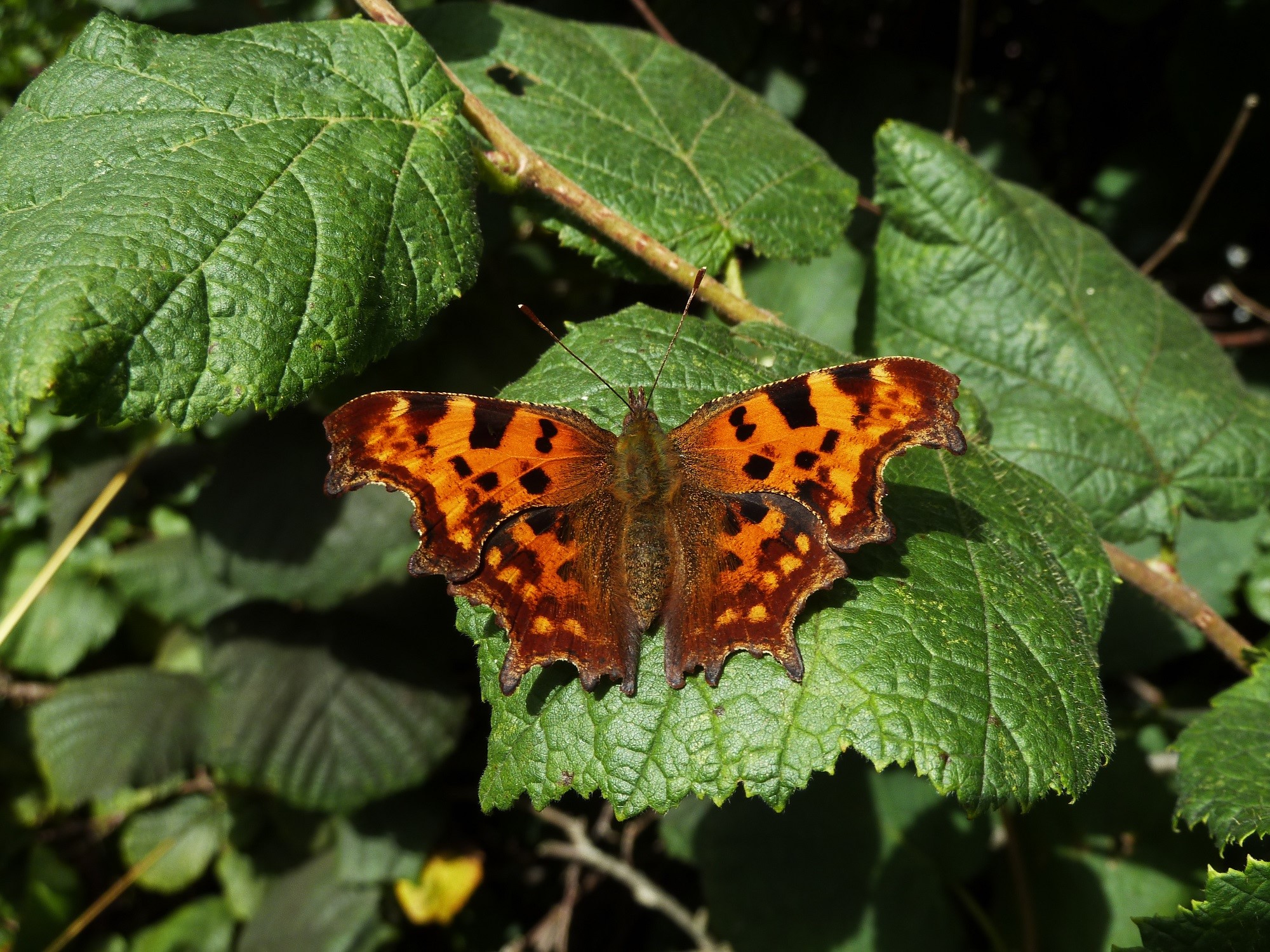If there was ever a new phrase we’ll never forget, social distancing must be one of them. I am finding myself feeling edgy whenever I see anyone approach. I find myself lining up obediently at those yellow floor lines in Tesco. My pharmacy admits one person at a time. No bingo, no school, no library, no gym, no sport, no playgrounds, no pubs, no restaurants, no hairdressers, no, no, no.
Not great, is it? But necessary.
But it got me thinking.
Do butterflies apply social distancing? The answer is yes, especially in spring!
In late summer and autumn, the species that overwinter as adult butterflies, the Comma, Peacock, Red Admiral and Brimstone happily feed together. Some even crowd together on the same inflorescence, especially buddleia and, in the case of the Comma, on the same Ice Plant inflorescence or overripe fallen fruit.
But in spring, when their priorities are so different, their attitude is totally different.
These species’ behaviour changes. Instead of congregating in an area to feed up for winter, they disperse and range widely, especially the Peacock and Small Tortoiseshell. Indeed, the male Small Tortoiseshell, Peacock and Comma become ferociously territorial. Any other butterfly entering their patch is swiftly investigated. Females are pursued. But the ladies play hard to get, clearly keen on social distancing.
Female Small Tortoiseshells and Peacocks flee, with the male having to find a burst of pace to keep up. Female Peacocks fly round the back of a tree trunk and close their wings, their black undersides blending in with the bark. The poor male flies wildly around, looking for her.
Female Small Tortoiseshells will deliberately fly into the territory of another male leaving her pursuer and the new male to fight while she vanishes. Another tactic she uses is to drop into vegetation. Being in love is not easy for a Peacock or Small Tortoiseshell.
Territory-holding male Commas, Small Tortoiseshells and Peacocks react aggressively to males entering their land. Fierce and frequently prolonged combat takes place, with males flying steeply upward, trying to fly above their rival. The opponent sometimes drops steeply followed by the territory holder only for both butterflies to climb sharply again-a sign that the rival has not given up. Some battles are brief. The invader is repulsed. But on some sites the rivals battle on and off for hours. So intense are these encounters you can hear the clash of wings. This activity takes time away from the vital job of ‘watching the girls go by!’
Sometimes the holder drives off a rival and returns home only to find a new male has moved in!
There is one benefit for butterfly-lovers of this frenetic action. The sexes of the Peacock, Small Tortoiseshell and Comma look identical. There is one sure way of distinguishing the sexes in spring. Both sexes bask on warm, dry ground. Males do so to warm up and to be ready to pursue a mate or rival. Females bask just to warm up. If you throw a stick over a basking female, she will ignore it. A male immediately reacts, thinking he sees another butterfly. He flies upwards. You know then that you’re looking at a male.
Brimstones don’t hold territories. Males patrol a patch such as a wood edge. They are not aggressive towards other males-they see them, check to see if it is a female and lose interest when he finds a male. But like the other butterflies that pass the cold months in the adult stage, they are not friendly!
Perhaps like spring’s earliest butterflies, we can change to meet our new circumstances.


